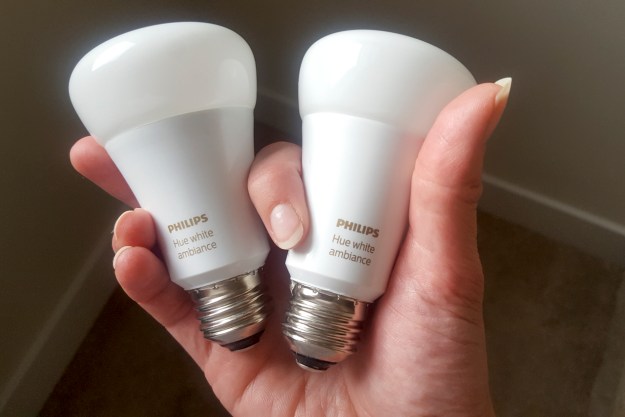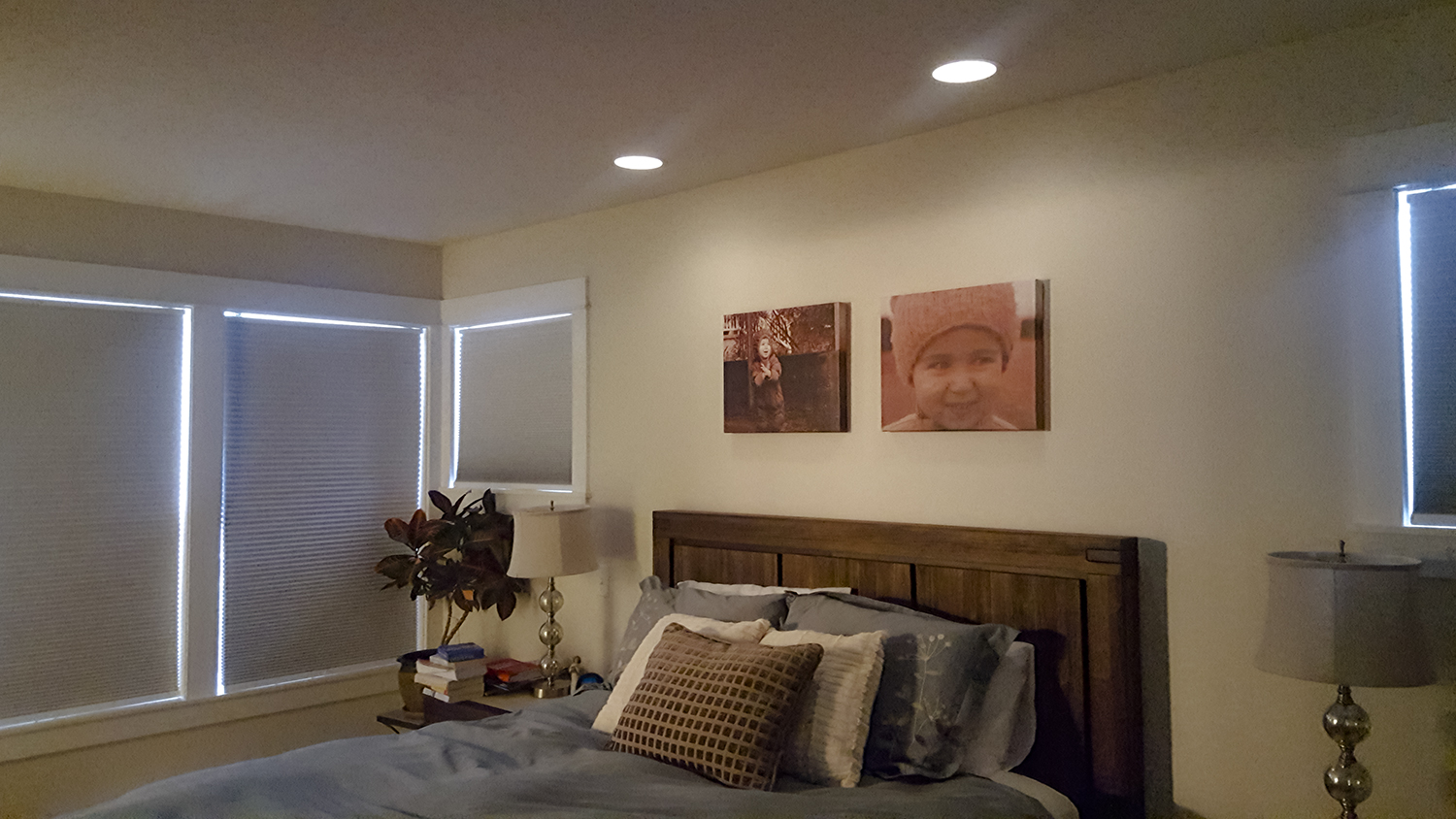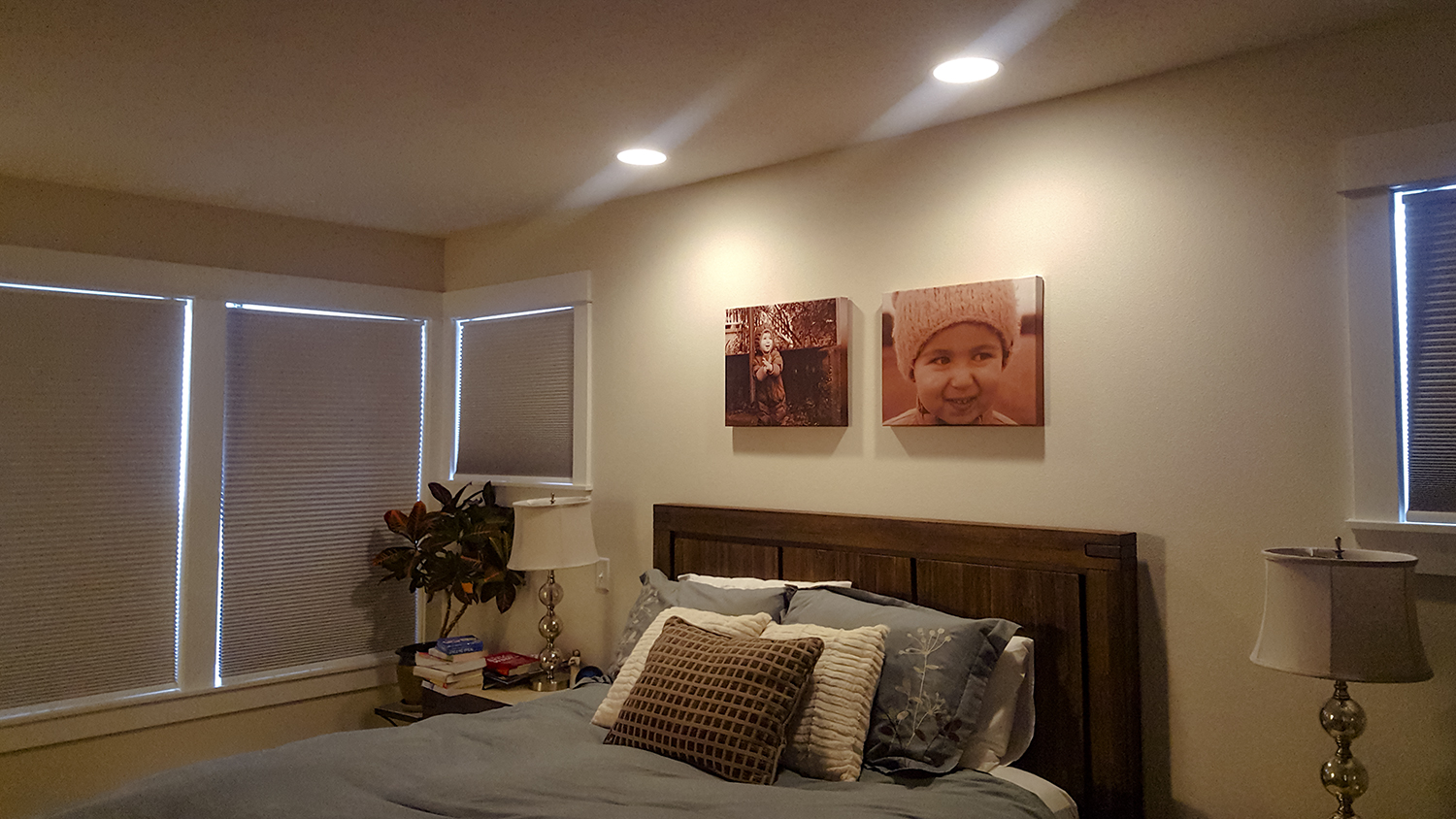
“Philips Hue is still the gold standard for smart home lighting.”
- Useful features
- Great range and responsiveness
- Extensive third-party app compatibility
- Works with Alexa, Siri, and Google Assistant
- Bridge must be plugged into your router
- Expensive
When Digital Trends first reviewed Philips Hue lightbulbs way back in 2013, it was basically the dark ages of smart home technology. Amazon was still just an online seller with a few Kindle devices, and Echo smart speakers with Alexa voice technology were just a pipe dream. Google was mostly a search engine, and no Google Home device was in sight. In fact, “smart home” hadn’t really taken off yet, and neither tech giant had firmly stepped foot inside the home.
Five years later, both Amazon and to an extent Google have transformed the home with their Echo and Google Home voice-assistant smart speakers. And that’s not all — from hubs to video doorbells , many homes now feature various tech devices that make our lives more connected than ever.
That’s why we thought it might be a good idea to give smart home pioneers Philips Hue a fresh look. Five years ago, Philips Hue was at the forefront in smart light bulb technology, and their Wi-Fi-enabled LED lighting systems were pretty new and innovative. Today, they’re considered to be the gold standard for smart lighting. But are they still really good?
We put the Philips Hue White Ambiance Starter Kit ($150), to the test.
Getting started
Out of the box, you’ll find four 806 lumens, 10 watts Hue lightbulbs ready to be installed with any standard lamp or ceiling light or fixture. They are about the same size as your average florescent or incandescent bulb, except with a flatter head. The starter kit also comes with a small square bridge that you must connect your router to with an ethernet cable. While Philips Hue bridges have always required a wired router connection, we wish that there were a way to connect wirelessly to avoid the already-jumbled mess of wires and cords next to the router.
To get started, replace your existing bulbs with the Philips Hue bulbs and connect the bridge base station to your home’s router. If you haven’t already done so, you’ll need to download the Philips Hue app, available on both iOS or Android. After following the steps for setup in the app, you can discover each bulb, name them, and indicate location. One bridge can pair with up to 50 bulbs.
Set the mood
Now that the system is linked, you can use the app to change the color settings or brightness. Keep in mind that with this particular starter kit you’re not getting the colored bulbs that come with the White And Color Ambiance Kit. Instead, you’re getting different shades of white. Different wavelengths of light affect your brain chemistry in different ways, and the right lighting can have a profound effect on your state of mind. We won’t bore you with lecture on how melatonin is regulated in your brains – but feel free to give it an extra read if you’re curious.
It’s important to note that you can only change the light color and brightness if you have the light switch(es) turned on
The Hue app comes with several preset “scenes,” such as yellowish white for “Relax” and bluish white for “Arctic Aurora.” For each scene, you can adjust the brightness and specific shade to whatever you desire. There are other “Recipes” that are supposed to cater to particular moods and activities, like “Concentrate,” and “Reading.” These settings are more natural, such as soft yellow tones to calm the mind, or a blueish-white hue to make you feel more energized. You can also create a new shade using a color wheel or even a picture from your phone’s gallery.
Through your app, you can control the lights from any remote location. You can set the alarm for specific scenes to turn on or off, and how long you want the bulbs to begin gradually lighting or dimming. This means you can reset the alarms while you’re at work or on vacation, or mess with the lights from afar to prank the kids at home. It’s important to note that you can only change the light color and brightness if you have the light switch(es) turned on and adjust the settings via the app. Otherwise, flicking the switch will still turn the lights on or off, you just won’t be able to edit the colors. The same goes with asking Alexa to turn on the lights when you walk into a room – the light switch will need to be on in order for it to work.
Set the scene
So, what can you do with these bulbs? Lots.
You can set alarms for the lights to start illuminating gradually to wake you up in the morning or dim as it draws closer to bedtime. During testing we found ourselves simultaneously amazed and annoyed that the lights above our bed turned on when we set an alarm for them to do so. Thankfully, Alexa is also in our bedroom, and if we felt like sleeping in, we could just tell Alexa to turn off the lights – without even opening our eyes.
Do you want room lighting that highlights the color of a decorative accessory, a new dress, or the color of anything at all in a room? Philips Hue has recently overhauled their app. Now, Philips Hue helps you match the colors of existing objects to accent and accentuate whatever you’d like. They also added 30 new scenes. We personally found the “Read” scene to be the most usable, everyday shade, while “Concentrate” seemed to blast an uncomfortably bright bluish white light upon us.
We like that Philips Hue lights can perform a light show and sync to music, but it’s not as fun to do it with the white ambiance lights. If you’re into that, buy the starter kit with both white and color ambiance bulbs instead, and rock out with some color.
We could walk in and say “Alexa, turn on the lights” without fumbling for the switch in the dark.
You can group certain bulbs together and control them together or individually. And the app works as a true remote control — not only can you turn lights on or off, but you can also dim the lights using an easy-to-operate bar that you can control by sliding your finger. You can put your lights at five percent, 45 percent, 100 percent, or anywhere in between.
If you have a voice assistant in your home, all you need to control the lights is your voice. Philips Hue works with Apple HomeKit, Google Assistant, and Amazon Alexa. Instructions for connecting is different for each platform, but you can get going relatively easily regardless by following the individual instructions/protocol for voice control. In our case, adding the Alexa skill was all it took, and we could walk into our bedroom and say “Alexa, turn on the lights” without fumbling for the switch in the dark.
Warranty information
Philips offers a warranty of two years based on up to three hours average working time per day at seven days per week. If this device does not conform to the warranty, Philips will send you, at its election, a replacement device or refund your original price upon receipt of the returned device, register receipt and proof of purchase.
Our Take
So, is Philips Hue still the gold standard for smart lightbulbs? We think yes. While other smart lighting solutions have come on the market in recent years, Philips Hue continues to improve on their product, has recently updated their app, and recently launched outdoor lighting products to make everything more seamlessly connected. While they’re still expensive considering they’re light bulbs, being able to control them and sync them to music makes them really useful and fun. The fact that they play nice with everything makes them valuable.
Is there a better alternative?
LIFX lighting would be its next major competitor, offering a range of al-a-carte lighting options that are also pretty expensive. For example, LIFX’s A19 LED Lightbulb retail on their website for $60. Another option is Wiz. We tested out Wiz Smart lights recently, but connectivity issues and a clunky physical remote means it’s hard for us to recommend them. If you want to have a colorful dance party or just the option of turning your lamp red, you might want to look into the Philips Hue Ambiance White and Color Starter Kit ($200) instead, which, as you may have guessed, includes bulbs that provide both white and color light.
How long will it last?
Philips Hue has proven its got staying power, as it plays well with just about everything, including all the voice assistants available on the market. The company has worked to stay current through app and product overhauls. In addition, with a two-year warranty you can’t go wrong.
Should you buy it?
If you have some extra cash on hand and are going to buy smart light bulbs regardless, then absolutely. While they’re a bit spendy at $150, they’re still the go-to product to up your smart lighting game. It’s the kind of accessory that could also vamp up your home in a functional and stylistic way.









